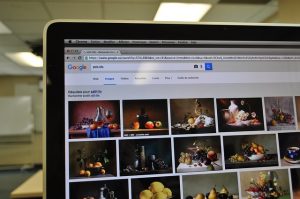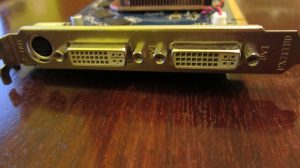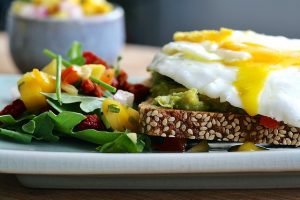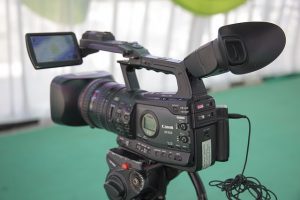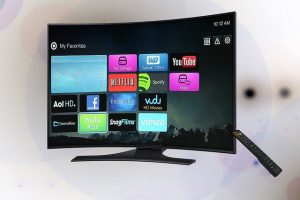I’ve been doing a lot of digital menu board work lately and I wanted to pass along a few tips and suggestions that will help take your menus to the next level. Note that most of the information in this article will apply to most types of digital signage CMS products unless indicated.
- If you plan to reuse any existing creative elements (photoshop / illustrator files for example), remember to re-size your graphics to fit the screen resolution. Most print files are created at larger sizes and at higher resolutions than what your typical flat-screen can display. Your media player hardware may be able to resize the content on the fly but this puts more stress on your hardware and may cause some reliability issues. There is no reason to push huge files if your media player hardware and displays only support 720p. Also, smaller resolutions means your content files will be smaller so you will use less storage space and your uploads and downloads will be quicker.
- Speaking of content, make sure your product photography is of adequate quality. You don’t have to hire a professional photographer but don’t use shots taken with your smartphone either. If you don’t currently have good images from your print material, consider purchasing some royalty-free images from one of the many online sources like Shutterstock, Istockphoto or Adobe Stock. These are some of the best sources of quality images and videos for commercial use.
- If you are planning to install more than one screen for your menu board, consider PCs equipped with video cards that support multiple screens and a CMS solution that lets you push individual content on each screen. This can mean a higher initial hardware cost but most multi-screen capable CMS solutions will let you use a single player licence per player device (not per screen). Of course, you could also use SoC (or “system on a chip”) equipped commercial displays or purchase small Android / Chromebox based media players. This would be cheaper than a multi-screen PC you may increase your software cost significantly since each media player will require its own software licence. As a rule, multi-screen PCs are really more cost effective for menu board applications over time.
- If you usually perform annual or bi-annual price / product changes, you can get away with using menus entirely produced in Adobe Photoshop, Illustrator, Corel Draw or any other graphics software of your choice. The upshot is that most graphics designers are familiar with these products so it’s easy to re-purpose existing assets and optimize the content for digital signage delivery so your content development costs will be minimal. However, anyone who updates content periodically should consider CMS products that support external data sources. These are software applications that can bring in data from point-of-sale systems or databases instead of embedding the information in your graphics. In fact, all the graphical elements can be rendered on the background layer while item description and pricing are overlaid on top. This way updates can be made at any time without the need to edit any graphics. This can also be very useful if you have a multi outlet chain where pricing may change between locations due to competitive pressures.
- Many restaurants rotate menus based on the time of day. Often daily specials are introduced at various times of the day so it’s important to find a CMS that lets you easily set start and end times for each menu. This way you can show the breakfast menu until 11:30 and then switch to the lunch menu automatically.
Some stores like to rotate menus constantly and when this happens, it’s important to leave each menu on screen for a sufficiently long time so customers can make their choices. Nothing is more frustrating than a menu that “flips” every few seconds.
- You can be more creative with digital signage than with print so think outside the box. If you install a row of screens, you can treat them all as one big canvas with content flowing from one screen into the others. Experiment with motion graphics and video backgrounds. Split some screens up into smaller zones to present content in new and innovative ways. If you go through the trouble of purchasing and installing a digital signage system, you might as well exploit all of its capabilities.
- Don’t overload your screens with too much text and graphics. Use proven design rules as you would for any other signage. Make sure your text is legible and that fonts are set at a point size that is readable from the viewer’s vantage point. Use contrasting colors. Don’t overwhelm viewers.
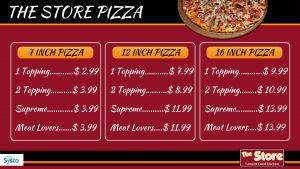
- If you plan to use video in your menu boards, ensure your media player hardware and software will be able to play the content reliably and smoothly. Properly encode your videos so you don’t have any problems. This way you won’t see any stuttering or artifacts while the content is playing. Purchase good quality royalty-free video content or hire an experienced video expert who can produce quality content at the proper bit rate.
- You may be interested in using consumer grade “smart TVs” if you have a small budget but this is often the wrong choice because using consumer grade equipment is fraught with problems. The TV manufacturer’s software may not have the features you need or may not support the content that you have. Pick a CMS solution and hardware components that will be adequate for the job. Remember that commercial applications require commercial grade hardware and software designed for these requirements: reliable 24/7 playback, remote management, wide content support, scheduling and programming capabilities, device remote control and a commercial warranty with on-site support. You simply won’t find these features with consumer grade equipment.

